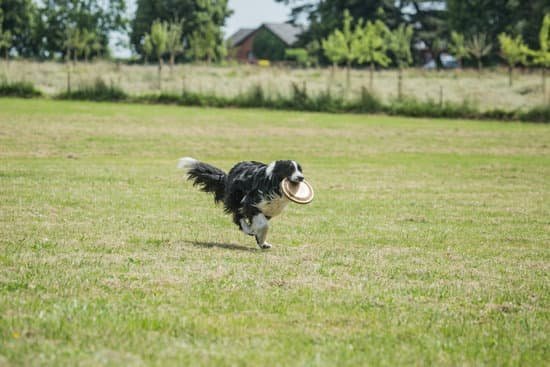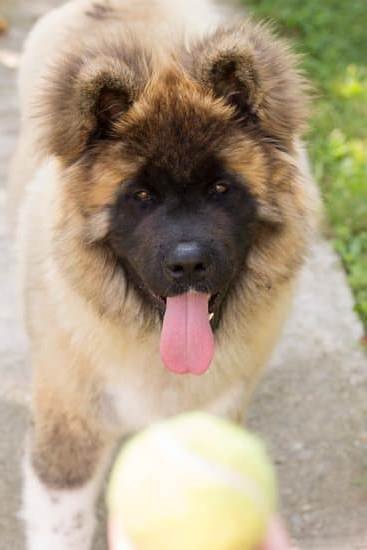Crate training is a vital aspect of helping stray dogs acclimate to a home environment and feel secure. In this article, we will delve into the essential steps of how to crate train a stray dog effectively. By understanding the significance of crate training, we can provide these dogs with a safe space where they can relax, feel protected, and learn important behaviors.
When it comes to stray dogs, assessing their behavior and readiness for crate training is crucial. Each dog has its own set of past experiences and traumas, so approaching this process with patience and empathy is key. By observing their reactions and comfort levels, we can tailor our approach accordingly to ensure a successful transition to crate training.
Setting up the crate for a stray dog involves creating a welcoming and comfortable space that encourages positive associations. From choosing the right size crate to adding cozy bedding and familiar items, every detail matters in making the crate an inviting haven for the dog. In the following sections, we will walk you through step-by-step guidance on introducing the stray dog to the crate and building positive associations using treats, toys, and praise.
Assessing the Dog’s Behavior and Readiness for Crate Training
When it comes to crate training a stray dog, it is essential to first assess the dog’s behavior and readiness for the process. Understanding the dog’s temperament, anxiety levels, and overall comfort with confinement will help in creating a positive and effective training experience. It is important to remember that stray dogs may have had previous negative experiences or traumas, so patience and understanding are key.
Observing the Dog’s Behavior
Before diving into crate training, take some time to observe how the stray dog reacts to various stimuli, such as loud noises, sudden movements, or being left alone. This will give you insight into their level of anxiety and potential triggers that may affect their response to crate training. Look out for signs of fear or aggression that may indicate a need for more gradual introduction to the crate.
Evaluating the Dog’s Comfort With Enclosed Spaces
Some dogs may feel uncomfortable or stressed in enclosed spaces initially. You can start by introducing the concept of confinement slowly by using baby gates or playpens before transitioning to a crate. Watch how the dog responds to being in an enclosed space and gradually increase the time they spend there. This will help them acclimate to the idea of being in a crate for longer periods without feeling anxious or trapped.
Assessing Separation Anxiety
Many stray dogs may struggle with separation anxiety, which can make crate training more challenging. If the dog shows signs of distress when separated from you or exhibits destructive behavior when left alone, it is important to address these issues before starting crate training.
Incorporating desensitization techniques and building trust through positive reinforcement can help alleviate separation anxiety and make the transition to crate training smoother. By taking these steps and assessing the dog’s behavior and readiness beforehand, you can set a solid foundation for successful crate training with a stray dog.
Setting Up the Crate for a Stray Dog
Crate training can be an essential tool for helping stray dogs adjust to life in a home environment. Setting up the crate properly is crucial to ensure the dog feels safe and comfortable in their new space. Here are some tips and recommendations on how to create the perfect crate setup for a stray dog:
- Choose the right size crate: The crate should be large enough for the dog to stand up, turn around, and lie down comfortably. However, it should not be too big as this may encourage bathroom accidents.
- Add bedding and comfort items: Place a soft blanket or bed inside the crate to make it more inviting. You can also include a favorite toy or item of clothing with your scent to help the dog feel secure.
- Location is key: Put the crate in a quiet area of your home where the dog can still feel like part of the family. Avoid placing it near loud appliances or high-traffic areas that may cause stress.
Introducing a stray dog to their new crate can take time and patience, but with the right setup, they are more likely to adapt quickly and positively.
Remember that every dog is different, so observe their behavior and adjust their crate setup accordingly to ensure they feel comfortable and safe. With consistent training and positive reinforcement techniques, your stray dog will learn to see their crate as a safe haven rather than a source of anxiety.
Introducing the Stray Dog to the Crate
Creating a Safe and Comfortable Environment
Before introducing a stray dog to the crate, it is crucial to create a safe and comfortable environment inside the crate. Place a soft blanket or towel on the floor of the crate to make it cozy for the dog. You can also add a piece of your old clothing with your scent to provide comfort and familiarity to the dog. Ensure that the crate is large enough for the dog to stand up, turn around, and lie down comfortably.
Encouraging Exploration and Positive Association
To introduce the stray dog to the crate, start by propping open the door of the crate and allowing the dog to explore it at its own pace. Encourage the dog with treats, toys, and praise whenever it shows interest in or enters the crate voluntarily. Do not force or rush the process; let the dog take its time to feel comfortable with the crate.
Gradual Enclosure Training
Once the stray dog seems comfortable entering and exploring the crate with positive reinforcement, you can start working on closing the door for short periods while still inside. Gradually increase the amount of time that you leave them in there while staying nearby to monitor their behavior. Make sure to reward calm behavior in order to reinforce positive associations with being in the crate. Remember, patience and consistency are key when introducing a stray dog to crate training.
Building Positive Associations With the Crate
When it comes to crate training a stray dog, one of the most effective ways to create a positive association with the crate is by using treats, toys, and praise. These tools can help make the crate a welcoming and comforting space for the dog, encouraging them to view it as their safe haven rather than a place of confinement.
To start building positive associations with the crate, introduce the dog to it gradually. Place treats inside the crate and let the dog go in on their own terms. Use enticing toys that they enjoy playing with inside the crate to make it a fun and enjoyable environment. Additionally, praise and reward the dog whenever they voluntarily enter or stay in the crate, reinforcing good behavior and creating a sense of security.
Consistency is key when using treats, toys, and praise to build positive associations with the crate. Make sure to always reward the dog when they exhibit calm behavior inside the crate, even if it’s just for a few seconds initially. Over time, increase the duration of time spent in the crate before rewarding them, helping them understand that good things happen when they are inside their designated space.
| Positive Association Strategies | Benefits |
|---|---|
| Using treats, toys, and praise | Creates a welcoming environment in the crate |
| Introducing gradual rewards for calm behavior | Reinforces positive behaviors associated with being in the crate |
By consistently employing treats, toys, and praise as part of your training routine, you can help a stray dog feel comfortable and secure in their crate. This positive association will not only make crate training easier but also provide them with a sense of security and ownership over their personal space. Remember to be patient and encouraging throughout this process as building trust and confidence takes time.
Implementing a Crate Training Schedule
To effectively implement a crate training schedule for a stray dog, consider the following tips:
- Feeding Schedule: Set specific times for feeding your dog inside the crate. This will help them understand that good things happen when they are in their designated space. Additionally, it can prevent accidents by regulating their meal times.
- Potty Breaks: Take your dog out for potty breaks at regular intervals and immediately after meals. This will reinforce good potty habits and prevent them from having accidents inside the crate. Remember to praise and reward them when they go potty outside.
- Alone Time: Gradually increase the amount of time your dog spends alone in the crate. Start with short intervals and gradually extend the duration as they become more comfortable. Use toys or treats to keep them occupied during alone time to reduce anxiety or boredom.
By following a consistent feeding, potty break, and alone time schedule, you can help your stray dog adapt to crate training more easily. Remember to be patient and understanding as they go through this process of learning. With time and consistent efforts, your furry friend will start seeing their crate as a safe haven rather than a source of stress.
Dealing With Common Crate Training Challenges With Stray Dogs
One common issue when crate training a stray dog is separation anxiety. These dogs may have never experienced being confined before, so being left alone in a crate can trigger anxiety and distress. To help them overcome this, it’s important to gradually acclimate the dog to being alone in the crate. Start by leaving them in the crate for short periods while you are still at home, gradually extending the time as they become more comfortable.
Barking and whining are also common behaviors exhibited by stray dogs during crate training. This can be their way of expressing fear, frustration, or seeking attention. It’s essential not to scold or punish the dog for barking or whining as it can increase their anxiety.
Instead, use positive reinforcement techniques when they are quiet and calm in the crate. Providing toys, treats, or a piece of clothing with your scent can also help soothe the dog and distract them from barking or whining. Remember that consistent training and patience are vital in addressing these challenges effectively.
| Challenge | Recommendation |
|---|---|
| Separation Anxiety | Gradually acclimate the dog to being alone in the crate; start with short periods while you are still at home. |
| Barking & Whining | Avoid scolding or punishing; use positive reinforcement techniques when they are calm; provide distractions like toys or treats. |
By understanding how to crate train a stray dog and addressing common challenges with patience and positive reinforcement, you can help them adapt to their new routine successfully. With consistency and compassion, even stray dogs can learn to see their crate as a safe space rather than a source of stress or confinement. Each small step towards overcoming these challenges brings them closer to feeling secure and comfortable in their new home environment.
Gradual Crate Training Progress
Crate training a stray dog can be a gradual process that requires patience, consistency, and careful monitoring of the dog’s behavior. It is important to understand that each dog will progress at its own pace when it comes to adapting to the crate.
Observing how the stray dog reacts to being in the crate will help you make necessary adjustments to the training plan. Remember that building trust and creating a positive association with the crate takes time, especially for a stray dog who may have had negative experiences in the past.
As you continue with the crate training process, keep a close eye on the behavior of the stray dog while inside the crate. Look for signs of stress, anxiety, or discomfort such as excessive panting, pacing, or whining.
If you notice any of these behaviors, it may be an indication that the dog is not yet comfortable being confined in the crate. In such cases, it is important to reassess your approach and make changes as needed to ensure a more positive experience for the stray dog.
Adjusting the training accordingly may involve taking small steps back in the process to give the dog time to acclimate slowly. For example, you can start by leaving the door of the crate open and allowing the dog to explore it at its own pace without feeling trapped.
Gradually increase the amount of time spent in the crate while providing positive reinforcement through treats, toys, and praise. By monitoring and adjusting your training approach based on how the stray dog responds, you can help build their confidence and comfort levels with being inside a crate over time.
Celebrating Milestones in Crate Training
Crate training a stray dog can be a rewarding process for both the dog and the owner. As you progress through the training, it is important to celebrate the milestones your furry friend achieves along the way. By acknowledging and reinforcing these accomplishments, you can build on the positive association with the crate and motivate your dog to continue learning and adapting to their new environment.
One of the key ways to celebrate milestones in crate training is by using positive reinforcement techniques. Whenever your stray dog willingly enters the crate or stays calm inside for an extended period, reward them with treats, toys, or verbal praise. This positive feedback helps reinforce good behavior and encourages your dog to see the crate as a safe and comfortable space. Over time, they will start associating this behavior with receiving rewards, making them more likely to repeat it.
In addition to using treats and praise as rewards, it is also essential to pay attention to your stray dog’s body language and behavior during crate training. Celebrate small victories like a decrease in whining or barking when in the crate or an increase in relaxation inside the confined space.
By monitoring these subtle changes and acknowledging them with positivity and encouragement, you can effectively motivate your dog to continue making progress in their crate training journey. Remember that every little step forward is a reason to celebrate and reinforce positive behaviors in your stray dog as they grow more comfortable with their new routine.
Conclusion
Crate training can be a valuable tool in helping stray dogs adjust to their new environment and become more comfortable with their surroundings. By providing them with a safe and secure space of their own, crate training can help reduce anxiety, improve behavior, and establish routines. However, successfully crate training a stray dog requires patience, consistency, and understanding.
One of the key benefits of crate training for stray dogs is that it can help them feel secure and relaxed in unfamiliar settings. The crate acts as a den-like space where they can retreat to when they need some time alone or want to feel safe.
This sense of security can be especially important for dogs that have experienced trauma or neglect in the past. With proper crate training, these stray dogs can learn to trust again and build confidence in their new home.
In conclusion, crate training is a valuable tool for helping stray dogs adjust to their new lives and become well-behaved members of the family. By following the steps outlined in this guide on how to crate train a stray dog, you can create a positive and supportive environment for your new furry friend.
Remember to be patient, consistent, and understanding throughout the process, as every dog is unique and may require different approaches. With dedication and love, your stray dog will soon learn to see their crate as a safe haven rather than a source of fear or anxiety.
Frequently Asked Questions
How Do You Get an Unwilling Dog Into a Crate?
Getting an unwilling dog into a crate requires patience, gentleness, and positive reinforcement. Start by associating the crate with positive experiences, such as treats or toys. Gradually increase the time spent in the crate while providing rewards to create a positive association.
How Long Does It Take to Crate Train a Rescue Dog?
The time it takes to crate train a rescue dog varies depending on the dog’s history and temperament. It can take anywhere from a few days to several weeks or even longer. Consistency, patience, and understanding are key factors in successfully crate training a rescue dog.
How Do I Stop My Rescue Dog From Crying in the Crate?
To stop your rescue dog from crying in the crate, you first need to determine the reason behind the behavior. It could be due to separation anxiety, fear, discomfort, or simply being unfamiliar with the new environment.
Providing comfort items like blankets or toys, creating a peaceful environment, and gradually increasing crate time can help alleviate crying over time. Training techniques like desensitization and counterconditioning can also be effective in reducing anxiety-related behaviors in the crate.

Welcome to the blog! I am a professional dog trainer and have been working with dogs for many years. In this blog, I will be discussing various topics related to dog training, including tips, tricks, and advice. I hope you find this information helpful and informative. Thanks for reading!





